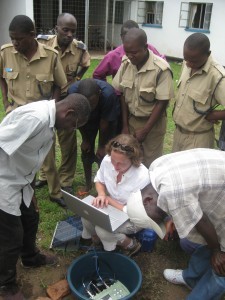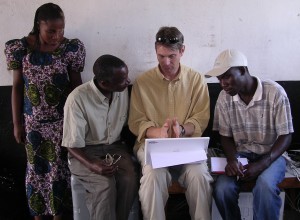While installing our seismic network in Malawi, we interacted with everyone from scientists to schoolteachers, and journalists to villagers. The opportunity to provide information and education to Malawians has been the most rewarding aspect of our effort. We trained local scientists and technicians on seismic equipment and data analysis, and educated the public on earthquakes and earthquake monitoring both in person and via media interviews. The Malawi Geological Survey Department (MGSD) prompted our visit by requesting assistance in monitoring aftershocks, and we hope that this temporary seismic deployment will empower them to obtain resources and training for a permanent seismic network.
Because we deployed our seismic stations near schools, clinics and other centers of village life, we met a wide spectrum of Malawians. Everyone we spoke with expressed interest in our undertaking and wanted to know more about the chindindindis (earthquakes in Tumbuka). In the village of Mpata, 5 miles west of Karonga, a crowd gathered around a laptop balanced on the hood of our 4×4 as Jim showed them aftershocks in newly downloaded data; the audience peppered him with pertinent questions about the East African Rift and earthquakes beneath Lake Malawi. Curious policeman looked on as I retrieved seismic records from a station positioned near a checkpoint ~10 miles north of Karonga, inquiring when and where the next earthquake would occur. Science teachers in Mlare helped us install a station near their school and received an impromptu lesson in plate tectonics and seismology.
Journalists from newspapers, radio stations and national TV programs also interviewed us during our visit, which allowed us to communicate with a larger audience about possible causes of the earthquakes and the benefits of monitoring them.


